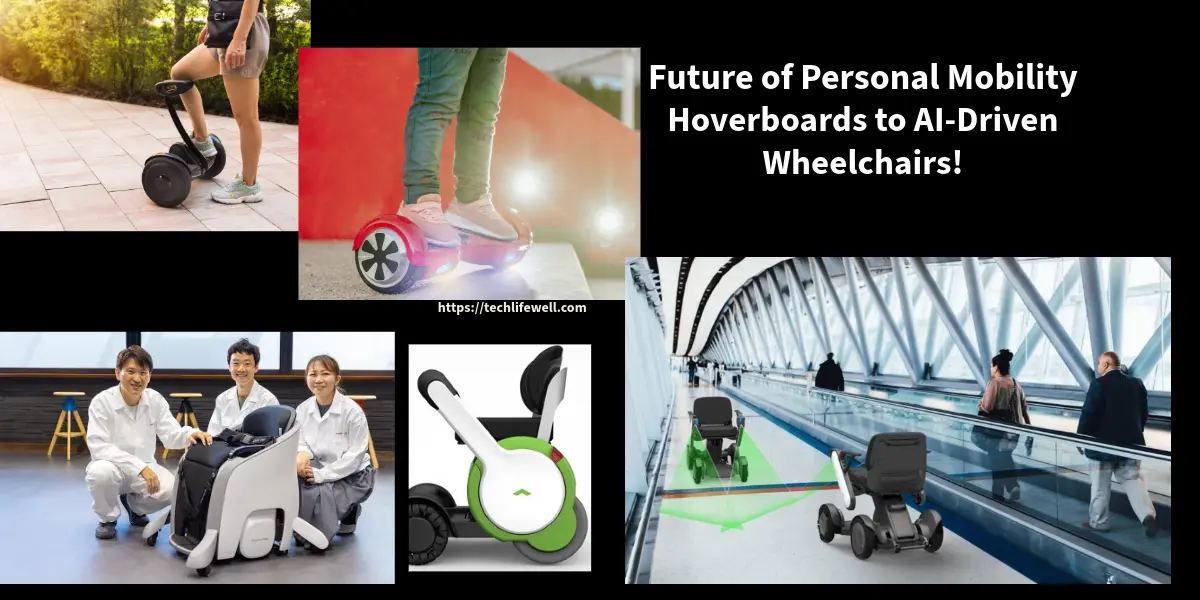Table of Contents:
Top Picks!
Related Stories
Explore the future of personal mobility with our in-depth analysis of cutting-edge innovations, from hoverboards to AI driven wheelchairs. Discover how technology is revolutionizing accessibility, enhancing independence, and shaping the next generation of mobility solutions
In recent years, the landscape of personal mobility has undergone a radical transformation. Innovations like hoverboards, electric scooters, and AI-driven wheelchairs are redefining how we move through the world. These advancements are not just enhancing convenience; they are revolutionizing accessibility, independence, and the overall quality of life for individuals with mobility challenges.
As cities become smarter and technology continues to evolve, the future of personal mobility is poised to offer unprecedented levels of freedom and efficiency. This blog post delves into the cutting-edge technologies shaping the future of personal mobility, their impact on society, and the exciting possibilities that lie ahead.
The Evolution of Personal Mobility Technology
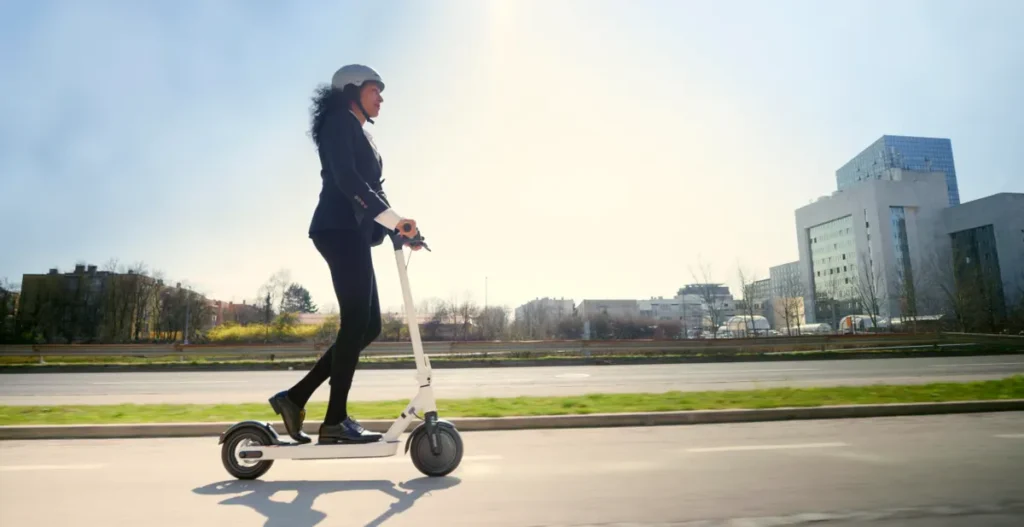
Personal mobility devices have come a long way from their humble beginnings. What started as simple manual wheelchairs and basic scooters has now evolved into a diverse array of high-tech solutions designed to meet the needs of various users.
The Rise of Hoverboards and E-Scooters
Hoverboards and electric scooters have become symbols of the new era of personal mobility. These devices, once considered novelties, have gained significant traction among urban commuters and recreational users. Their compact size, ease of use, and ability to navigate crowded city streets make them popular choices for short-distance travel.
Hoverboards: Initially marketed as futuristic gadgets, hoverboards have found practical applications beyond just fun. They are now used by people looking for an efficient way to move around campuses, large office complexes, and urban environments. Advances in battery technology and safety features have made hoverboards more reliable and accessible to a wider audience.
E-Scooters: Electric scooters, or e-scooters, have seen explosive growth in recent years, particularly in urban areas. Companies like Bird, Lime, and Spin have rolled out fleets of e-scooters in cities worldwide, providing a convenient and eco-friendly alternative to traditional transportation. With the ability to cover several miles on a single charge, e-scooters are becoming integral to urban mobility.
AI-Driven Wheelchairs: Empowering Independence
While hoverboards and e-scooters are primarily geared toward able-bodied users, AI-driven wheelchairs represent a groundbreaking advancement for individuals with mobility impairments. These intelligent mobility aids are designed to enhance independence, safety, and comfort for users, particularly those with severe disabilities.
Adaptive Technology: AI-driven wheelchairs are equipped with sensors, cameras, and machine learning algorithms that allow them to adapt to the user’s needs in real-time. For example, these wheelchairs can navigate complex environments, avoid obstacles, and even predict the user’s intentions based on their movements and preferences. This level of customization and responsiveness significantly improves the quality of life for users.
Case Study: Whill Model Ci: One of the most notable examples of an AI-driven wheelchair is the Whill Model Ci. This sleek, compact device features intuitive controls, advanced stability, and the ability to navigate tight spaces with ease. The Whill Model Ci is equipped with a range of smart features, including app-based controls, remote operation, and the ability to customize driving settings to suit individual needs.
Case Study: LUCI: Another pioneering product in this space is LUCI, an AI-powered platform that can be added to existing power wheelchairs. LUCI uses sensors and cameras to create a 3D map of the user’s environment, enabling the wheelchair to avoid obstacles, detect drops, and provide real-time alerts to the user. This technology enhances safety and gives users greater confidence when navigating unfamiliar or challenging terrain.
The Role of Smart Cities in Personal Mobility
As personal mobility devices become more advanced, they are also becoming more integrated into the fabric of smart cities. Smart cities leverage technology and data to improve urban living, and personal mobility devices are playing a crucial role in this transformation.
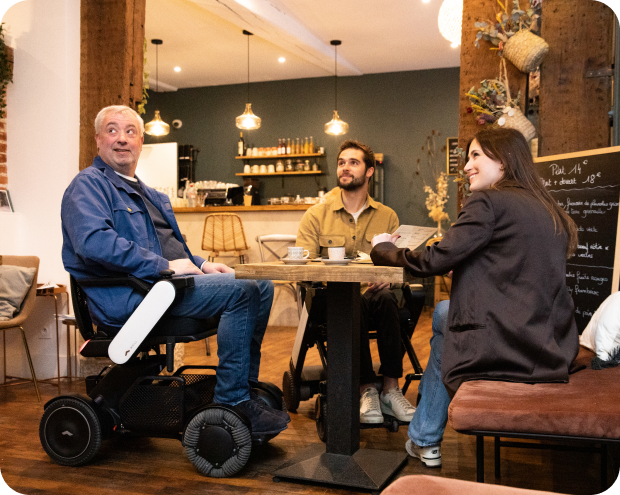
Integration with Smart City Infrastructure
The future of personal mobility is closely tied to the development of smart city infrastructure. As cities adopt intelligent transportation systems, personal mobility devices like e-scooters and AI-driven wheelchairs will benefit from enhanced connectivity and support.
Smart Traffic Management: In smart cities, traffic lights, crosswalks, and other infrastructure elements are becoming connected to a central network. This allows for real-time traffic management, which can optimize the flow of vehicles and pedestrians. Personal mobility devices can communicate with this network to receive information about traffic conditions, safe routes, and potential hazards. For example, an AI-driven wheelchair could receive a notification about a temporary obstacle on a sidewalk and automatically adjust its route.
Charging Stations and Battery Management: As electric mobility devices proliferate, the demand for charging infrastructure is increasing. Smart cities are addressing this need by installing charging stations at strategic locations, such as public transportation hubs, parks, and shopping centers. In the future, these stations may be equipped with wireless charging capabilities, allowing users to power up their devices without needing to plug them in. Additionally, smart battery management systems can monitor the energy consumption of personal mobility devices, optimizing charging schedules and extending battery life.
Data-Driven Mobility Solutions: One of the key advantages of smart cities is the ability to collect and analyze vast amounts of data. This data can be used to create personalized mobility solutions for residents and visitors. For example, AI algorithms can analyze a user’s daily travel patterns and suggest the most efficient routes and modes of transportation. Personal mobility devices can then be integrated into this system, ensuring seamless travel across various modes of transport.
The Impact of AI on Urban Mobility
Artificial intelligence is playing a transformative role in urban mobility, not just for individuals with disabilities but for the general population as well. AI-driven technologies are making it easier to navigate cities, reducing congestion, and improving the overall efficiency of transportation systems.
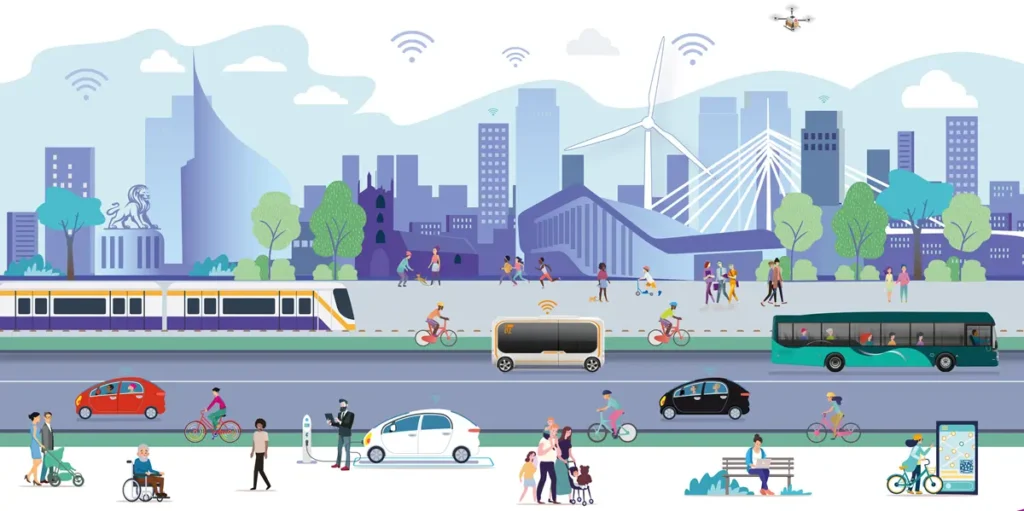
Autonomous Vehicles: One of the most significant AI-driven innovations in urban mobility is the development of autonomous vehicles. Self-driving cars, buses, and shuttles are expected to become common in smart cities, providing safe and efficient transportation options for all residents. These vehicles can communicate with personal mobility devices, offering seamless integration with the broader transportation network.
Predictive Maintenance: AI can also be used to monitor the condition of personal mobility devices and predict when maintenance is needed. For example, an AI-powered e-scooter could detect signs of wear and tear on its tires and alert the user to schedule a repair before a breakdown occurs. This proactive approach to maintenance reduces downtime and ensures that mobility devices remain reliable.
Societal and Environmental Impacts of Personal Mobility Technologies!

As personal mobility technologies become more widespread, they are expected to have significant societal and environmental impacts. These impacts will shape the way we live, work, and interact with our environment.
Enhancing Accessibility and Inclusion
One of the most profound societal impacts of advanced personal mobility technologies is their potential to enhance accessibility and inclusion for people with disabilities. AI-driven wheelchairs and other adaptive devices empower individuals to live more independently, participate in community activities, and pursue employment opportunities.
Breaking Down Barriers: Historically, physical barriers have limited the participation of people with disabilities in various aspects of society. Advanced mobility technologies are helping to break down these barriers, making public spaces, transportation, and workplaces more accessible. For example, AI-driven wheelchairs can navigate complex environments like crowded airports or uneven terrain, allowing users to travel and engage in activities that were previously challenging.
Case Study: Toyota’s Welwalk: Toyota’s Welwalk is an innovative robotic exoskeleton designed to assist individuals with lower limb disabilities. This wearable device uses AI to analyze the user’s gait and provide targeted assistance to improve walking ability. The Welwalk exoskeleton is an example of how AI can be used to enhance mobility and rehabilitation, helping individuals regain their independence.
Reducing Environmental Impact
The widespread adoption of electric personal mobility devices is expected to have a positive impact on the environment. These devices produce zero emissions, reducing the carbon footprint of urban transportation.
Lowering Carbon Emissions: As more people choose electric scooters, hoverboards, and AI-driven wheelchairs over traditional gasoline-powered vehicles, the overall carbon emissions from transportation are expected to decrease. This shift toward cleaner, more sustainable modes of transport is essential for combating climate change and improving air quality in urban areas.
Promoting Sustainable Urban Planning: The rise of personal mobility devices is also influencing urban planning. Cities are being redesigned to accommodate pedestrians, cyclists, and users of electric mobility devices. This shift away from car-centric infrastructure promotes sustainable, walkable communities that prioritize the well-being of residents and the environment.
Case Study: Copenhagen’s Green Mobility Initiatives: Copenhagen, Denmark, is a leading example of a city that has embraced green mobility. The city has invested in extensive cycling infrastructure and has integrated e-scooters and other electric mobility devices into its transportation network. As a result, Copenhagen has one of the lowest carbon footprints per capita among major cities, demonstrating the potential environmental benefits of widespread personal mobility adoption.
Addressing Challenges and Concerns
While the future of personal mobility is full of promise, it also comes with challenges that need to be addressed. These challenges include safety concerns, regulatory issues, and the need to ensure equitable access to mobility technologies.
Safety Considerations: As personal mobility devices become more prevalent, safety is a primary concern. Cities must implement regulations and infrastructure improvements to ensure the safe use of these devices. For example, dedicated lanes for e-scooters and hoverboards can reduce the risk of accidents with pedestrians and vehicles. Additionally, the development of AI-driven safety features, such as collision detection and emergency braking, can further enhance the safety of mobility devices.
Regulatory Challenges: The rapid evolution of personal mobility technologies has outpaced the development of regulations. Policymakers must work to create a regulatory framework that addresses the unique challenges posed by these devices. This includes setting standards for safety, accessibility, and environmental impact, as well as ensuring that new technologies do not exacerbate existing inequalities.
Equitable Access: To fully realize the benefits of personal mobility technologies, it is essential to ensure that they are accessible to all members of society, regardless of income or ability. This may require subsidies, public-private partnerships, and the development of affordable options for low-income individuals. Additionally, efforts should be made to ensure that personal mobility devices are available in underserved communities, where transportation options may be limited.
The Future Outlook: What Lies Ahead!
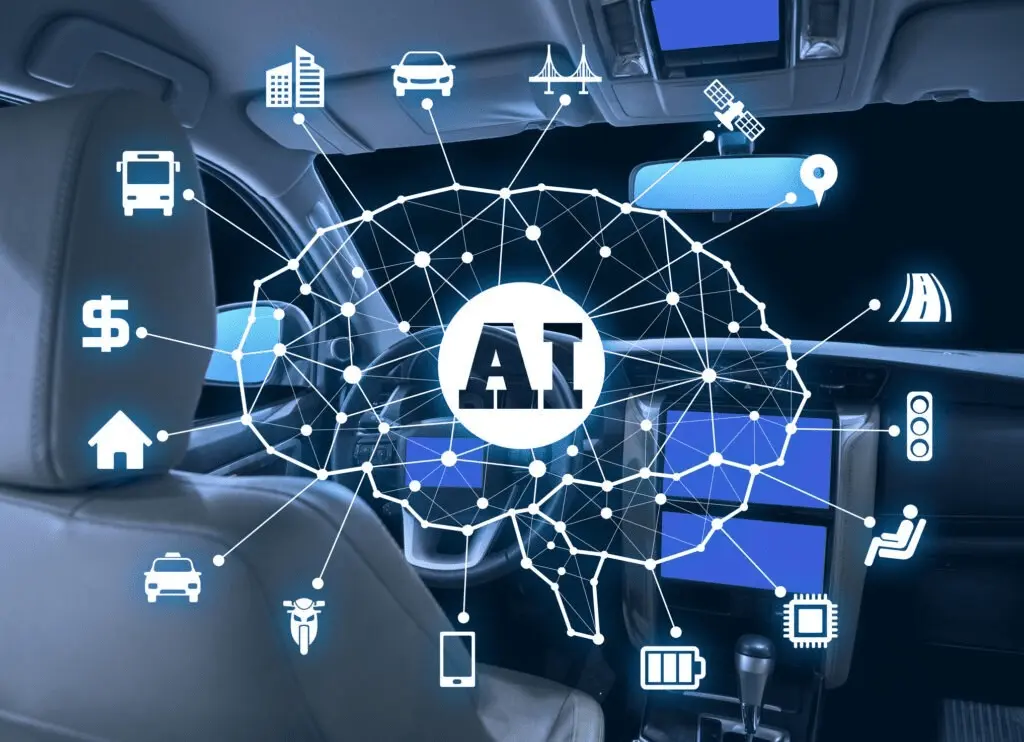
The future of personal mobility is bright, with continued innovation and integration of new technologies. As we look ahead, several trends are likely to shape the future of how we move through our world.
Continued Advancements in AI and Robotics
AI and robotics will continue to play a central role in the development of personal mobility devices. As AI becomes more sophisticated, mobility devices will become even more intuitive, adaptive, and capable of meeting users’ needs.
Next-Generation AI Wheelchairs: The next generation of AI-driven wheelchairs will likely feature even greater levels of autonomy and customization. These wheelchairs may be able to learn from the user’s behavior over time, anticipating their needs and preferences. For example, an AI-powered wheelchair could automatically adjust its seating position to reduce discomfort during long periods of use or navigate to a user’s favorite locations without requiring manual input.
Wearable Mobility Aids: Wearable mobility aids, such as exoskeletons and smart prosthetics, will also benefit from advancements in AI and robotics. These devices will become more lightweight, comfortable, and responsive, enabling users to perform a wider range of activities with greater ease.
The Rise of Micro-Mobility Solutions
Micro-mobility solutions, such as e-scooters and hoverboards, will continue to gain popularity, particularly in urban areas. These devices offer a convenient and eco-friendly alternative to traditional transportation, and their adoption is expected to increase as cities become more congested.
Integration with Public Transportation: One of the key trends in micro-mobility is the integration with public transportation. Cities are developing systems that allow users to seamlessly transition between personal mobility devices and public transit, such as buses and trains. For example, a commuter could use an e-scooter to travel to a train station, then take the train to their destination, reducing the need for car travel.
Expansion of Shared Mobility Programs: Shared mobility programs, such as those offered by companies like Lime and Bird, are expected to expand to more cities and regions. These programs provide an affordable and convenient way for people to access personal mobility devices without the need for ownership. As shared mobility becomes more widespread, it could reduce the number of cars on the road, alleviating traffic congestion and reducing carbon emissions.
The Role of Smart Cities in Shaping Mobility
Smart cities will continue to drive the evolution of personal mobility, with a focus on creating more connected, efficient, and sustainable urban environments.
Connected Mobility Ecosystems: In the future, personal mobility devices will be part of a larger connected mobility ecosystem. This ecosystem will include autonomous vehicles, public transportation, and smart infrastructure, all working together to provide seamless and efficient transportation options. Users will be able to plan and execute their journeys using a single app, which will integrate various modes of transport and provide real-time updates.
Sustainable Urban Development: As cities become smarter, there will be a greater emphasis on sustainable urban development. This includes designing cities that prioritize walking, cycling, and the use of electric mobility devices over traditional car travel. Green spaces, pedestrian-friendly streets, and accessible public transportation will be key features of future cities, creating healthier and more livable environments.
External References:
The Future of Mobility is at Our Doorstep: The Next Wave of Micro-Mobility – An analysis of the trends shaping the micro-mobility sector, including the rise of e-scooters and hoverboards in urban settings. Read more.
WHILL: Revolutionizing Personal Mobility with Autonomous-Driving Wheelchairs This article discusses how WHILL is transforming the mobility market with its AI-enabled autonomous wheelchairs, enhancing freedom and independence for people with restricted mobility. Read more.
The Evolution of Mobility Aids: New Technology & Possibilities – This piece explores the history and future of personal mobility devices, from simple walking sticks to advanced AI-powered technology. Learn more.
Honda Unveils Hands-Free Wheelchair You Steer Like a Segway – Honda Robotics introduces a hands-free wheelchair prototype that users can steer with their body weight, similar to a Segway, making it easier for people with mobility issues to navigate. Check it out.
Conclusion:
The future of personal mobility is full of exciting possibilities, driven by rapid advancements in technology and the growing demand for more accessible, efficient, and sustainable transportation options. From hoverboards and e-scooters to AI-driven wheelchairs, these innovations are transforming the way we move through our world, offering new levels of independence and convenience.
As smart cities continue to develop, personal mobility devices will become increasingly integrated into the urban fabric, creating a connected mobility ecosystem that benefits all residents. However, it is essential to address the challenges and concerns associated with these technologies, including safety, regulation, and equitable access, to ensure that everyone can enjoy the benefits of the future of personal mobility.
In the coming years, we can expect to see continued innovation in this space, with AI, robotics, and sustainable design playing central roles in shaping the future of how we move. Whether it’s through the development of next-generation AI-driven wheelchairs or the expansion of shared micro-mobility programs, the future of personal mobility promises to be more inclusive, efficient, and environmentally friendly than ever before.
